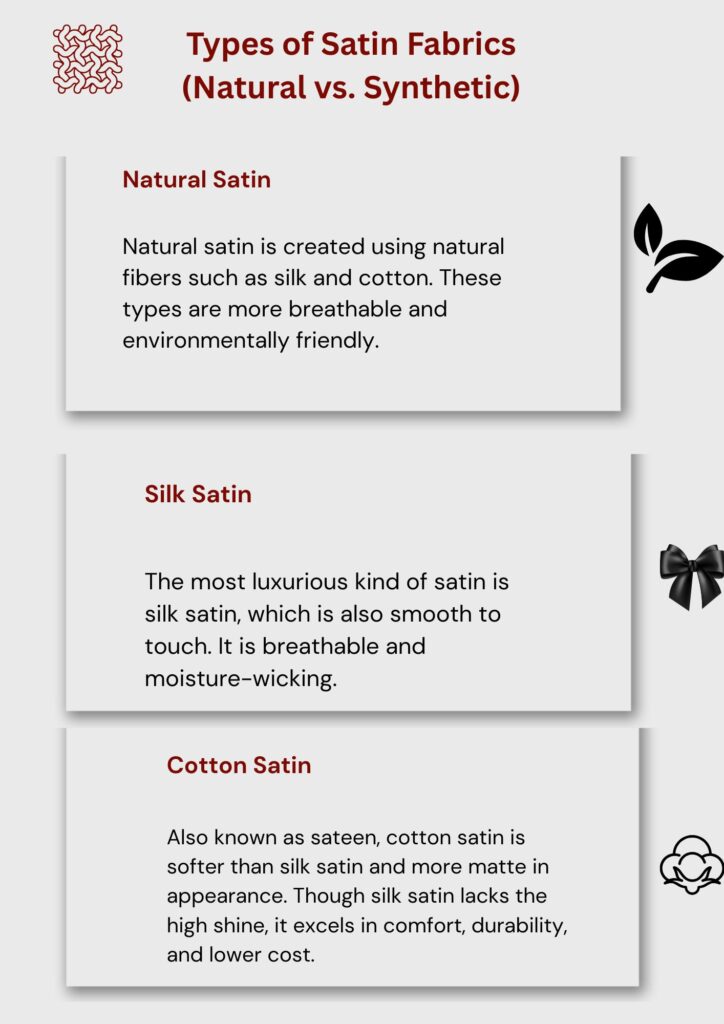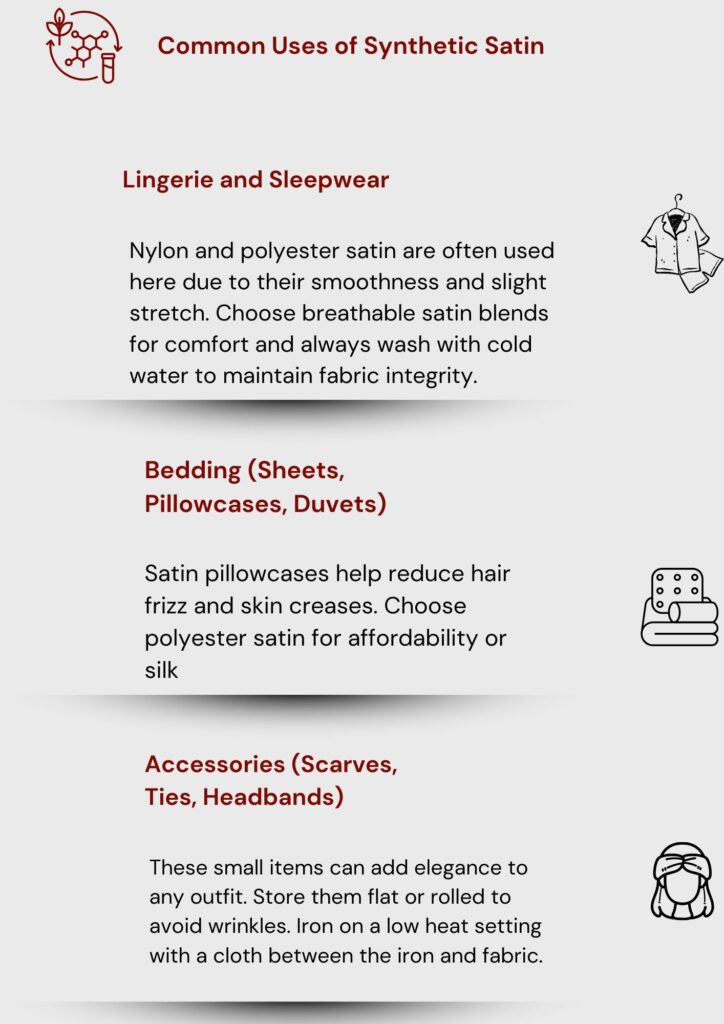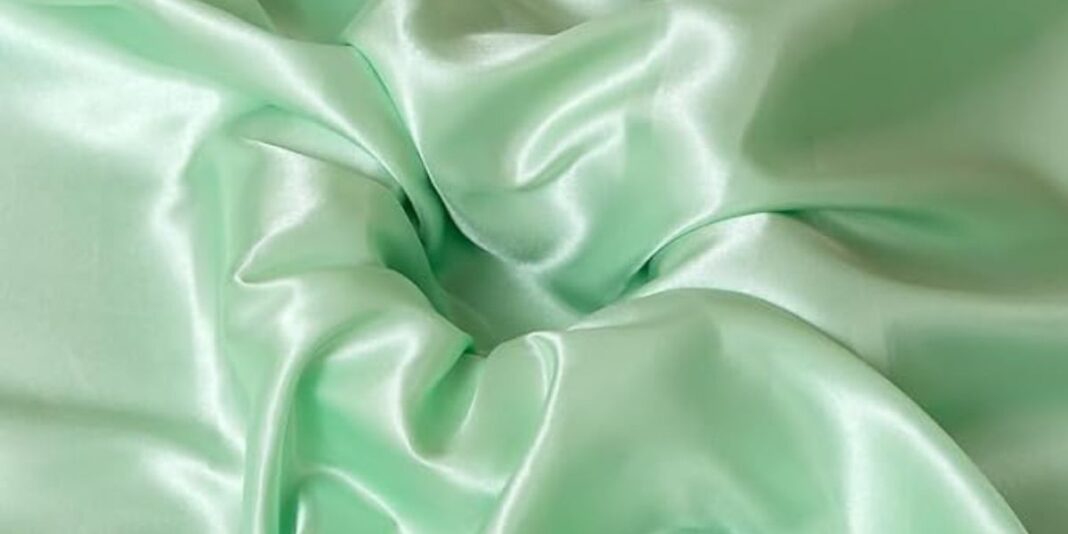Introduction
Satin stands out as one of the most luxurious and widely used fabrics in fashion and home décor. Sauna marked with smooth, shiny surfaces, satin is common in Lezzini thikhars, silk sprays, sarees as well as gulbeds and sabets.is satin a synthetic fabric
When it comes to fabric origins, one of the most frequently asked questions is: Is satin a synthetic fabric? This guide will delve into the facts about satin, exploring its natural or synthetic claims and aiding in your decision on which would best suit your needs. By no means is it going to be a dry revision guide, let us take a plunge in the world of satin and have some fun!
What is Satin?
The assumption many people make is that satin is some sort of fiber. In fact, satin is not a fiber but rather a type of yarn and weave structure. It has two operations: weaving and the other is a glossy finish.
The trademark shine of satin results from its weave construction. The veil yarns floating right above the fabric surface are termed light reflective. Usually, four if not more, warp threads float on one weft thread, which results to a sleek and lustrous product.
Satin can be made from different kinds of fibres, both natural and synthetic, as satin is a weaving style. This gives rise to various types of satin fabrics, each with their specific qualities.
Types of Satin Fabrics (Natural vs. Synthetic)
To determine if satin is synthetic or not, we need to analyze the different types of fibers used to create satin fabric. These fibers can be natural, synthetic, or semi-synthetic.

Natural Satin
Natural satin is created using natural fibers such as silk and cotton. These types are more breathable and environmentally friendly.
Silk Satin
The most luxurious kind of satin is silk satin, which is also smooth to touch. It is breathable and moisture-wicking. Being composed of a natural fiber, silk satin is biodegradable, but comes at a higher price and requires gentle handling.
Cotton Satin
Also known as sateen, cotton satin is softer than silk satin and more matte in appearance. Though silk satin lacks the high shine, it excels in comfort, durability, and lower cost. Because of these traits, cotton satin is common in summer clothing and even bedding.
Synthetic Satin
Made from synthetic fibers, this type of satin is favored for commercial purposes due to its lower cost and wider availability.
Polyester Satin
This is the most common form of satin available today. You can find polyester satin in dresses and skirts because it is cheaper than pure silk and has similar glossy design. Also, it is hard wearing, wrinkle free and best for bulk production.
Nylon Satin
Nylon satin exhibits more stretch which makes it comfy for lingerie, tights wear and intimate apparel. Though not as shiny as polyester satin, it offers better elasticity.
Rayon Satin
As a satin, rayon is semi-synthetic because it comes from cellulose (which is plant-based) but is chemically treated. This fabric has a nice soft drape that is good for flowing clothes and linings, however, it is not as strong as polyester satin.
Is Satin a Synthetic Fabric?
This is the big question: Is satin a synthetic fabric?
The short answer is no—satin is not purely synthetic. Instead, satin is made out of both natural and synthetic fabrics.
Still, in today’s market, most satin fabrics you come across—especially in lower-priced clothing and bedding—are made from polyester. This is because polyester satin is cheaper, easier to care for, and more durable than natural alternatives.
Thus, whether satin is synthetic or natural depends on the fiber content, not the weave.
The Advantages and Disadvantages of Synthetic Satin
Pros and cons indeed exist with satin, and understanding them helps with decision-making. Let’s look at synthetic satin’s strengths and weaknesses.
Pros
- Lower Cost: Both satin made from polyester as well as nylon are significantly cheaper than their silk counterpart.
- Durability: Synthetic satin is tougher to wrinkles and general wear.
- Easy to Color: Synthetic fibers absorb my dyes well, resulting in vibrant and long-lasting colors.
- Machine-Friendly: Most synthetic satin can be washed on gentle cycles.
Cons
- Less breathable: Traps both heat and moisture making it uncomfortable.
- Static Cling: Like, a lot. Dry weather especially makes nylon and polyester cling to static electricity.
- Environmental Concerns: Man made fibers release microplastics and are slow to decompose, taking hundreds of years which damages ecosystems.
How to Tell If a Satin is Synthetic
Identifying whether a satin fabric is synthetic or not takes a combination of touch, visual inspection, and special techniques. Distinguishing factors are available that can differentiate between natural and synthetic satin.
Burn Test
If possible, carefully set aflame a small hidden piece of the fabric. Heating such a sash will yield different results for different materials. Synthetic satin smelly and burns giving off a pungent chemical odor, while silk slowly combusts and smells like burning hair.
Label Check
Examine tags on the clothing or fabric. They will contain information on the raw materials that were used to create the fabric. Stripped or coated silks will yield marked tags such as “polyester,” “nylon”, “rayon”, or “acetate”, which are clear indicators of synthetic fabrics.
Texture and Shine
The shine texture and feel of the fabric differs depending on the fabric used. Synthetics tends to be shinier and somewhat stiffer, whereas silk satin is softer to the touch and exhibits more understated shine.
Common Uses of Synthetic Satin
Due to satin being versatile as well as affordable, its lacks sides and is omni present. Industries and applications have synthesized uses everywhere fabric is needed.

- Wedding Dresses: Due to elegance, ease of use and price, polyester satin is often favored by designers for use on gowns.
- Lingerie: For intimate garments, satin made of nylon has both elasticity and smoothness.
- Home Textiles: Pillowcasesand sheets made from polyester satin have sleek shiny fibers.
- Fashion Garments: Fast fashion dresses and blouses are commonly low priced due to the use of satin.
Because it used to make satin are widely available, this fabric is now a preferred choice for Mustaf and customers.
Environmental Impact of Synthetic Satin
With the many advantages of satin comes a variety of environmental issues.
The most widely used fiber in synthetic satin is polyester, which is a type of plastic. Because it is plastics, it does not biodegrade and adds to the microplastic pollution problem in oceans and waterways caused by laundry.
However, more sustainable options are becoming available.
- rPET – Recycled Polyester: rPET is now produced from discarded soda bottles and is helpful to landfills.
- Tencel Satin: This is a satin-like material made from sustainably harvested wood pulp. Tencel is compostable and very soft on the skin.
If you care about the environment, then try to opt for natural fibers or used recycled satin whenever it is available.
Care Instructions for Synthetic Satin
Following care instructions extends the life span and appearance of synthetic satin, Here is how to maintain it :
- Wash using cold water: Wash on a gentle cycle to prevent damage to the fibers.
- Do Not Use High Heat: Never dry or iron with hot settings as synthetic satin can melt under high temperatures.
- Use Mild Detergent: Strong chemicals can a spa enhanced shine, soften it, and leave it dull.
- Air Dry: Lay flat or hang to dry. This helps keep shape and shine.
Always carefully read wash labels before caring for other satin garments.
Conclusion
So, is satin a synthetic fabric? Whatever its source, satin is a weave not a fiber and can be made from natural silk and cotton or synthetic polyester, rayon and nylon.
Most satin fabrics available on the market today are synthetic because of their lower price, longevity, and widespread availability. However, the choice should always factor in your budget, usage needs, and the environmental impact.
Go for silk satin or eco-friendly alternatives if luxury and sustainability is what you’re after. But if practicality is what you’re after, then synthetic satin could be the answer.
FAQs
No, satin is a weave not a fiber, it can be natural, synthetic or blended.
Silk satin wins in comfort, breathability, and being more eco-friendly. On the other hand, polyester satin is cheaper, more durable, and easier to care for.
High-quality polyester satin does have some resemblance to the look of silk, but does not possess the soft, natural feel, and breathability of real silk.
Satin made of silk is hypoallergenic, meaning it does not irritate while also being breathable which make sit ideal for touching skin. On the other hand, wearing synthetic sateen can trap warm air and make the person sweat which might cause problems on sensitive atopic skin.


